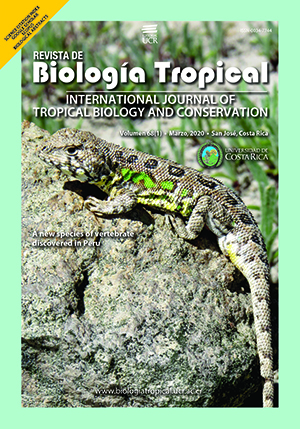Abstract
Pteridium aquilinum is a heliophilous fern widely distributed in Mexico. It is a pioneer species usually found within disturbed habitats with high ecological relevance because of its allelopathic properties, its resistance to fire and drought conditions. Objective: Provide an integrative description regarding P. aquilinum spores shape and ornamentation, and also on gametophyte morphogenesis, including the type of germination and the prothallic development (highlighting its morphology). Furthermore, the anatomy of young sporophyte grown under in vitro conditions was described. Methods: We used scanning electron microscopy and histological paraffin technique to describe the gametophytic and sporophytic phases. Results: The evaluation of the spores showed the presence of globular morphology and triletes with granulated ornamentation; while their germination was Vittaria-type, the prothallic development corresponded to the Adiantum-type. The antheridia were observed 13 days following to the sowing, whereas archegonia arose at day 17. The first leaf of the sporophyte appeared between days 60 and 70. At fourth month, the in vitro grown sporophyte showed the typical anatomy of the individuals of the species at this age, since it did not exhibit vitrification. The histological analysis of rhizome, the petiole base, first order rachis and lamina showed the three tissue systems well differentiated. The anatomical modifications observed in vitro, such as a non-polycyclic dictyostele and just one band sclerenchyma in the rhizome, may be attributed to the individuals age. Moreover, the stomata are present on the adaxial surface of lamina, corresponding to the anomocytic type. Although these stomata were developed under in vitro conditions, it is important to highlight that they are completely functional. Conclusions: Our work describes for the first time the morpho-anatomy of both the gametophytic and the sporophytic phases in the life cycle of P. aquilinum under in vitro conditions. Our results indicate that this method will allow deeper exploration of biological, physiological and ecological properties of the species.
##plugins.facebook.comentarios##

This work is licensed under a Creative Commons Attribution 4.0 International License.
Copyright (c) 2020 Felipe de Jesús Eslava-Silva, Karina Jiménez Durán, Manuel Jiménez Estrada, María Eugenia Muñiz Díaz de León


